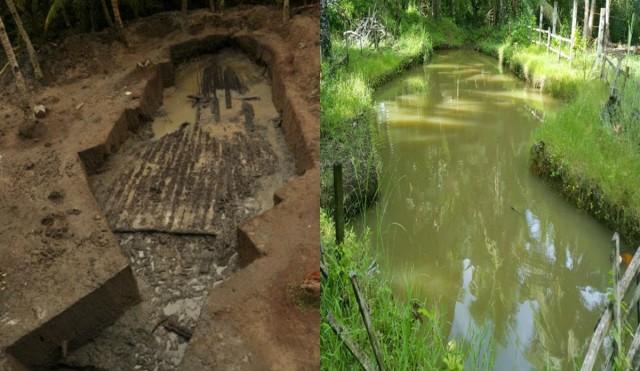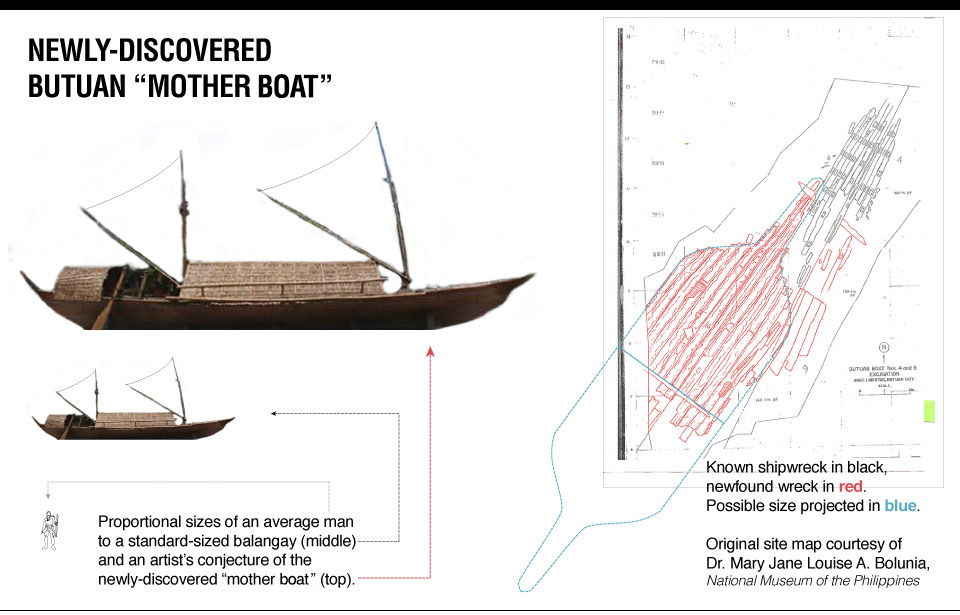Historic giant balangay remains unexcavated

Four years since it was discovered in a marshy plain in northern Mindanao, the largest ancient Filipino boat ever discovered lies unexcavated.
Despite its immense cultural and historical significance, the "mother boat" balangay has been practically untouched since 2013.
Submerged under barely waist-deep brackish water, it remains tantalizingly beyond reach—at least for now.

Raising the balangay from private land
National Museum archeologist Dr. Mary Jane Louise A. Bolunia, who headed the initial digs, says that raising the boat is tricky because it's buried in private land.
"The National Museum has been in constant communication with the lot owners where the balangays are found because we would like to acquire them to establish a maritime heritage park in that area of Butuan," she said.
The establishment of such a park, or any museum for that matter, is no easy undertaking: it's important to present artifacts in a way that encourages viewers to learn more about their historical and cultural context.
The potential role of modern technology
It's worth noting that a growing number of museums around the world are looking to modern technology, including CT scans and 3D printers, to make replicas that look and feel like the original artifact.
"You can, for example, scan and print an artifact that's accurate down to the tiniest cracks and flaws. This allows scientists and the public alike to appreciate the original without the risk of damaging it," notes archaeologist Vito Hernandez.
In the case of the Butuan balangays, he says that such technology could be used to make replicas to take the place of the originals.
"(Theoretically,) you could exhume everything, make scientific replicas, and put back those replicas and conserve the original in safer conditions," he said.
Appreciating the balangays' history
Seeing what the boats looked like buried in the ground could give the public a better understanding not just of the boats themselves but also of the conditions in which they were found.
Hopefully, according to Hernandez, this could spark intelligent conversation on the balangays' history—how they were used, how they came to be buried, and how they came to be found and preserved.
"Museum curation should impact the curation of knowledge itself," Hernandez underscored.
Temporary preservation underwater
But all that would have to wait for the time when the "mother balangay" can be safely exhumed.
For now, according to Bolunia, it remains protected in its watery crypt.
"Yes, we can keep the boat in situ. The present status of the balangay being submerged in water and mud is actually a form of preservation. It does not look nice though," she admitted.
The biggest balangay ever found

At 25 meters long—more than the length of two city buses laid end-to-end—Butuan's "mother boat" is the biggest balangay ever found.
Discovered in 2013, the immense vessel promises to change our understanding of how our ancient ancestors once sailed the open seas.
"'Balangay' is a name given to the plank-built, edge-pegged boats discovered in Butuan since the 1970s. The only major difference is its size, which is twice that of the earlier boats," explains Bolunia. — GMA News





